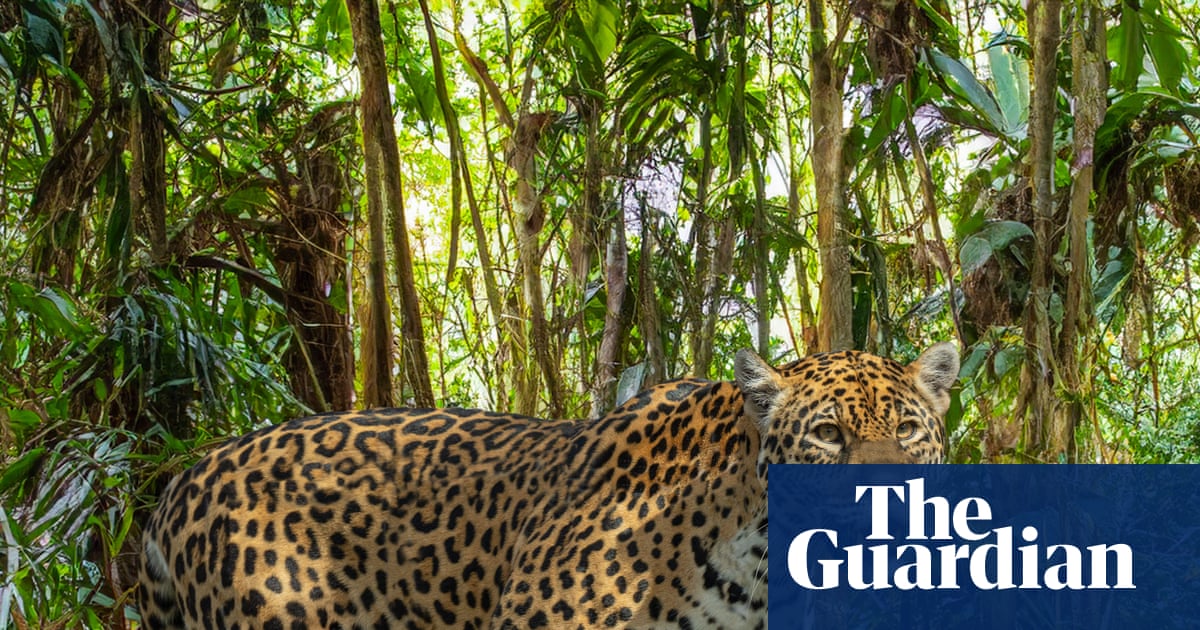‘We’re winning a battle’: Mexico’s jaguar numbers up 30% in conservation drive | Mexico

In 2010, Gerardo Ceballos and a group of other researchers set out to answer a burning question: how many jaguars were there in Mexico? They knew there weren’t many. Hunting, loss of habitat, conflict with cattle ranchers and other issues had pushed the population to the brink of extinction.
Ceballos and his team from the National Alliance for Jaguar Conservation (ANCJ) thought there were maybe 1,000 jaguars across the country. They decided to carry out the country’s first census of the animal to find out exactly how many there were. They found 4,100.
“It was a great surprise, terrific news,” Ceballos said. “Obviously 4,000 means the species is still in danger of extinction, but 4,000 is a lot better than 1,000.”
Fast-forward 15 years and the news has got even better. The group’s latest census found that in 2024 there were 5,326 jaguars in Mexico, a 30% increase compared with 2010.
“The fact that the country has managed to maintain and increase its population over the last 14 years is extraordinary,” Ceballos said. “For me it’s great news for the country. Mexico and the world need good news.”
The census took place over 90 days across 15 states, using 920 motion-capture cameras and involving nearly 50 researchers as well as local community leaders. Researchers looked at an area of 414,000 hectares, making it the largest census for any mammal in Mexico.
Jaguars were found across the country, with the largest number in the Yucatán peninsula region (1,699), followed by the south Pacific area (1,541), north-east and central Mexico (813), the north Pacific (733) and the central Pacific coast (540).
Ceballos credits three main factors for the population increase: maintaining natural protected areas where jaguars can roam freely, reducing the conflict between cattle ranchers and jaguars, and a publicity campaign that has put the jaguar on the map.
“Before when we started, the jaguar was virtually unknown,” Ceballos said. “Right now it’s one of the most well-known species” in Mexico.
Still, at the current rate of population increase it would take 25 to 30 years for the jaguar to no longer be considered at risk of extinction in Mexico. Ceballos and his team aim to reduce that time to just 15 years.
There are many challenges in their way. Deforestation and loss of habitat continue to be a major issue: Mexico has lost 600,000 hectares of forest and jungle in the last six years. In the Yucatán peninsula alone, the country loses 60,000 hectares of forest and jungle each year, vastly reducing the areas in which the jaguar can live and hunt.
after newsletter promotion
“On the one hand it’s a travesty,” said Ceballos. “But on the other hand, it means that where there are still jungles and forests, the populations are growing.”
Ceballos said there was also a thriving online marketplace for jaguar teeth, skin and claws, among other body parts. He hopes to work with social media companies to have pages marketing such products taken down.
The construction of new highways is a continuing challenge. Not only do they fragment a jaguar’s territory but they increase the risk of the animals being run over. This can be mitigated by building specific points where animals such as jaguars can cross safely.
There is continuing conflict with cattle ranchers, and the spread of diseases from domesticated animals also poses a threat to the jaguar population.
Ceballos said a greater financial commitment to conservation from the federal government was needed, as well as support from the private sector, from scientists and from landowners to protect areas where jaguars may be living, if they were to meet their goal.
“We are winning a battle in a war that is being lost. But it is a very important battle,” he said. “It gives us hope that if we articulate the right policies, we can achieve great results.”


